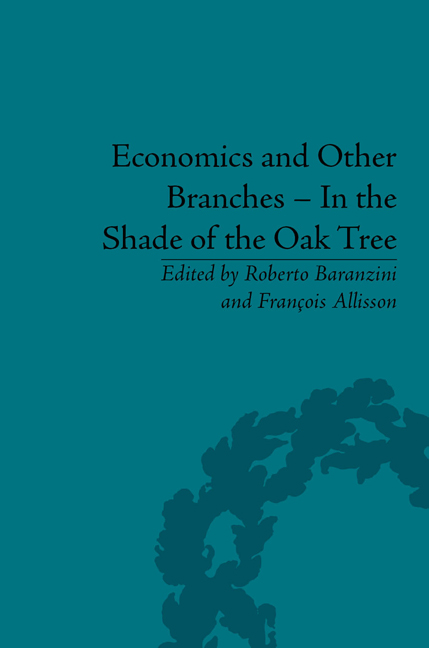Book contents
- Frontmatter
- CONTENTS
- List of Contributors
- List of Figures and Tables
- Introduction
- Pascal Bridel's Bibliography (up to 2013)
- Part I Léon Walras's Economic Thought
- Part II The Spreading of Thought
- Léon Walras's Reception
- The Lausanne School
- French Matters
- Cambridge UK
- Part III Monetary Theory
- Part IV Methodology
- Part V Economics and Humanities
- Economics and Social Sciences
- Some Insights from Visual Arts
- 26 Imaginative Intelligence: Cognition in the Visual Arts versus Rationality in Economics
- 27 Realism and Reality: The Arguments of Cinema
- Part VI Economics and Civil Society
- Notes
- Index
27 - Realism and Reality: The Arguments of Cinema
from Some Insights from Visual Arts
- Frontmatter
- CONTENTS
- List of Contributors
- List of Figures and Tables
- Introduction
- Pascal Bridel's Bibliography (up to 2013)
- Part I Léon Walras's Economic Thought
- Part II The Spreading of Thought
- Léon Walras's Reception
- The Lausanne School
- French Matters
- Cambridge UK
- Part III Monetary Theory
- Part IV Methodology
- Part V Economics and Humanities
- Economics and Social Sciences
- Some Insights from Visual Arts
- 26 Imaginative Intelligence: Cognition in the Visual Arts versus Rationality in Economics
- 27 Realism and Reality: The Arguments of Cinema
- Part VI Economics and Civil Society
- Notes
- Index
Summary
The question of the definition of reality within a larger reflection on ‘realism’ involves several fields of knowledge and disciplines, in science as well as in human sciences. These matters are prevalent in the domain of aesthetics, whether they touch on literature, art or cinema. A positivistic nineteenth century outlined its own version of reality as given, as being-there, available for both experimentation and representation. Still, when confronted with one another, the variants of realism modulate this very proposition. The emergence of cinema at the turn of the century has largely been thought from the question of reality: it outdid photography – or so people claimed. In any case, cinema was a scientific tool before it became a media: Etienne-Jules Marey first defined the chronophotographic method with his invention of chronophotographic cameras and projectors to perform the analysis of movement in animal locomotion. Cinema thus developed in the crucible of the scientific experimentation of a real phenomenon, movement. At the crossroads between science and spectacle, it raised the issue of the representation of reality from the specificity of its photographic medium, which could record the ‘truth’ (a term always in need of a definition) of the reality of the world.
Throughout the twentieth century, the variants of realism had to respond to a ‘positivistic’ definition of reality, adding complexity to it and modelling it.
- Type
- Chapter
- Information
- Economics and Other Branches – In the Shade of the Oak TreeEssays in Honour of Pascal Bridel, pp. 383 - 396Publisher: Pickering & ChattoFirst published in: 2014

